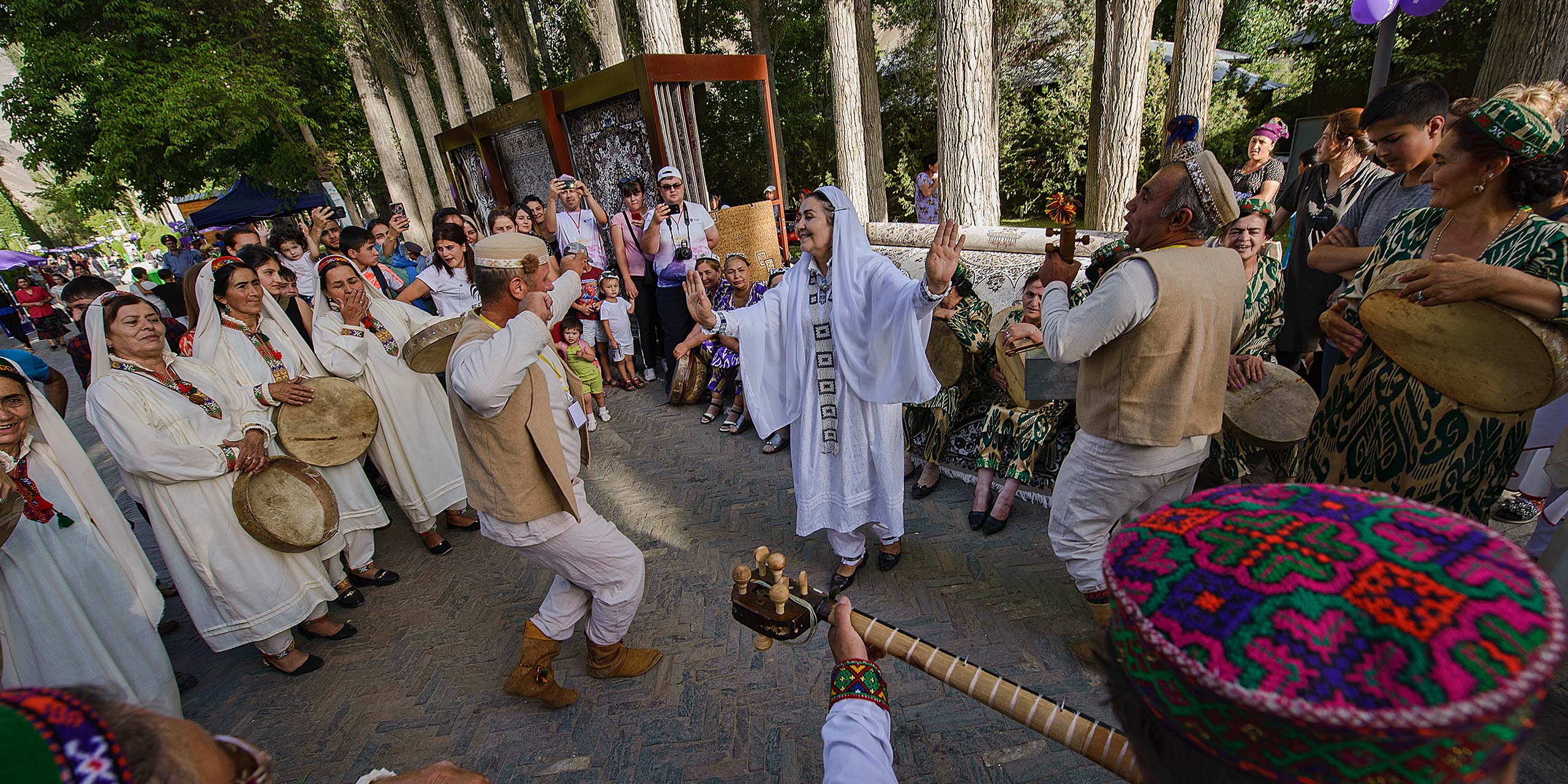
I certainly didn’t go to Tajikistan for its cities. But after two weeks of Pamir Highway dust and grime, potholed roads, and camping out, I was ready for at least a few of the comforts of home. Little did I know that Khorog, the capital of mountainous Gorno-Badakhshan, would provide far more than just a bed and breakfast, and in fact, turn out to be one of the highlights of my road trip.
My companions and I had been on the road for several weeks, having about as epic a series of misadventures as one could have in one of the most remote regions on the planet. A yak carrying my pack on a trek had fully submerged in a river, short-circuiting my Kindle, and turning my goose-down feathered sleeping bag into soggy baffles.
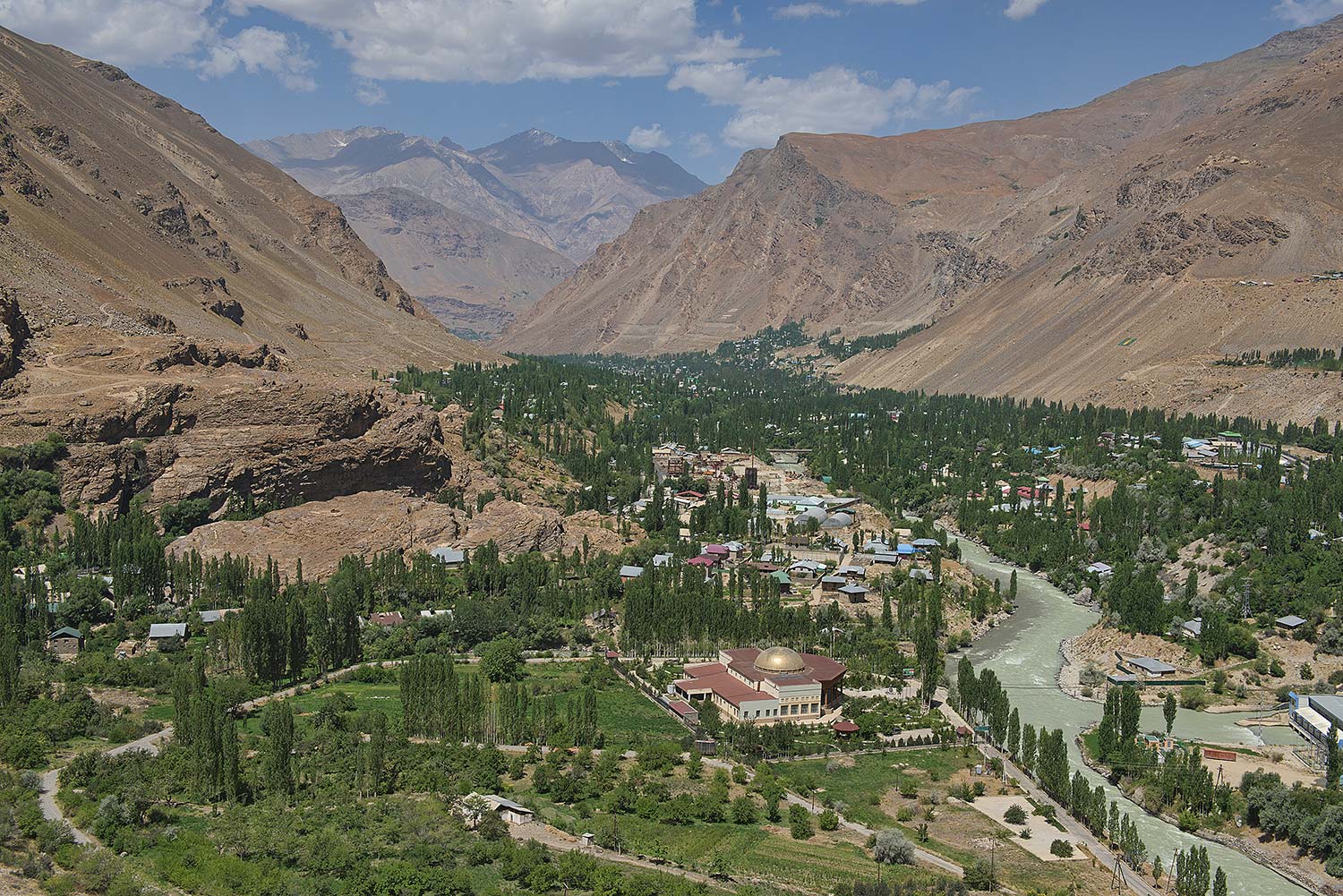
And the land cruiser we were in had tested its (and all our) limits crossing rivers strong and deep enough to carry us downstream into Afghanistan. To say we were ready for some much-needed R&R was an understatement.
We rolled into Khorog ready for a restaurant meal, a WiFi connection, and a bit of luxury, which at this point in our travels, might only have consisted of two buckets of hot water, one to bathe with and another to wash out our dust-covered gear.
While those arriving by plane to the only airport in the Pamirs might find the “city” more akin to a hamlet, to us it looked like a real metropolis, an orderly and verdant high desert oasis set along both sides of the glacier-fed Ghunt River, with rows of tall poplar trees lining the narrow road into town.
Khorog was a sought-after location during the 19th century Great Game between Russia and Great Britain, each trying to gain a foothold across Afghanistan, Tibet, and Persia. The Russians eventually established control here, building a fort, and later making it part of the Soviet Union.
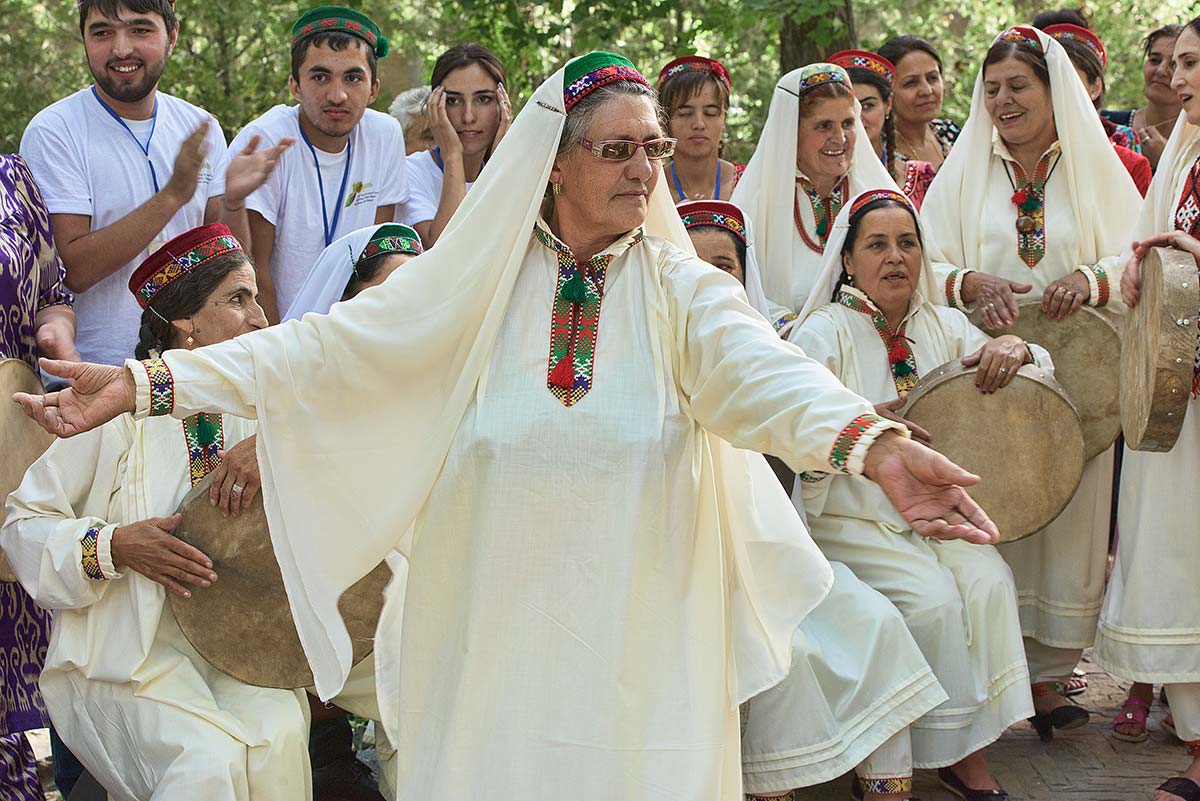
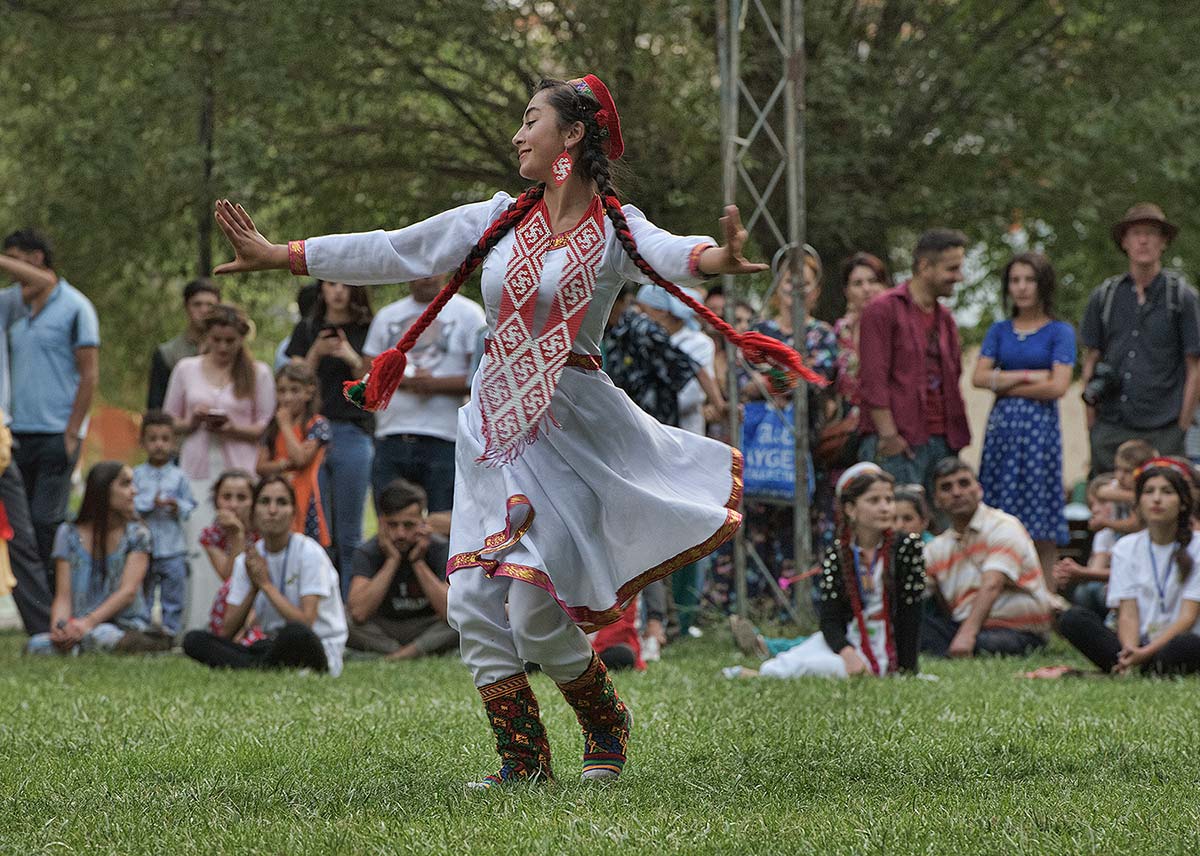
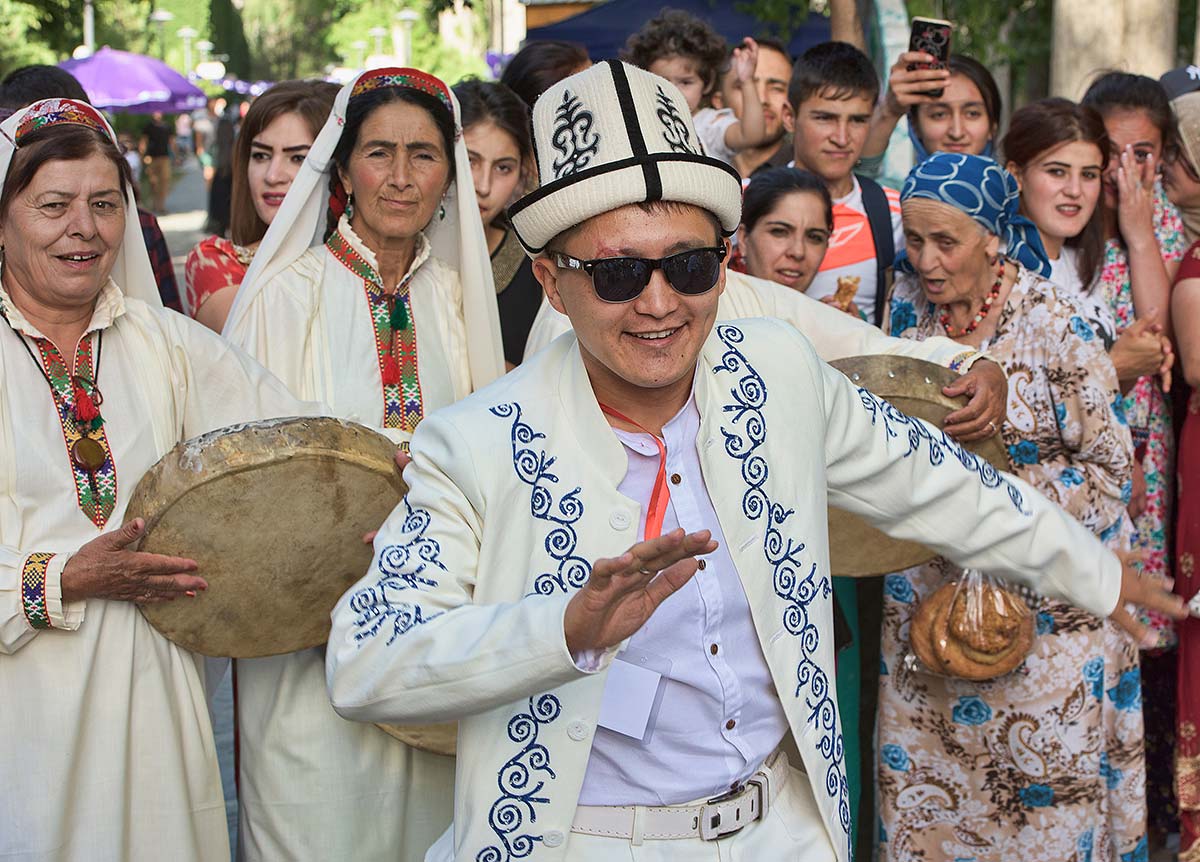
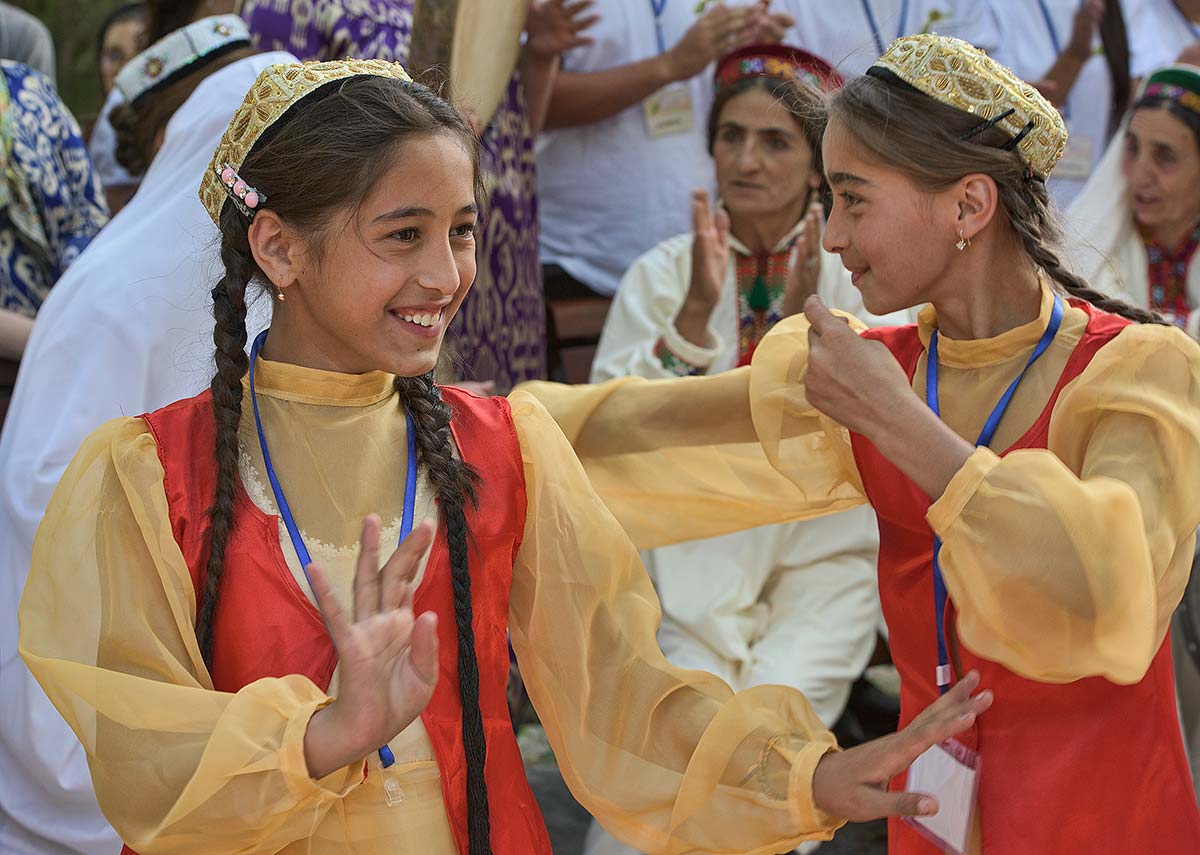
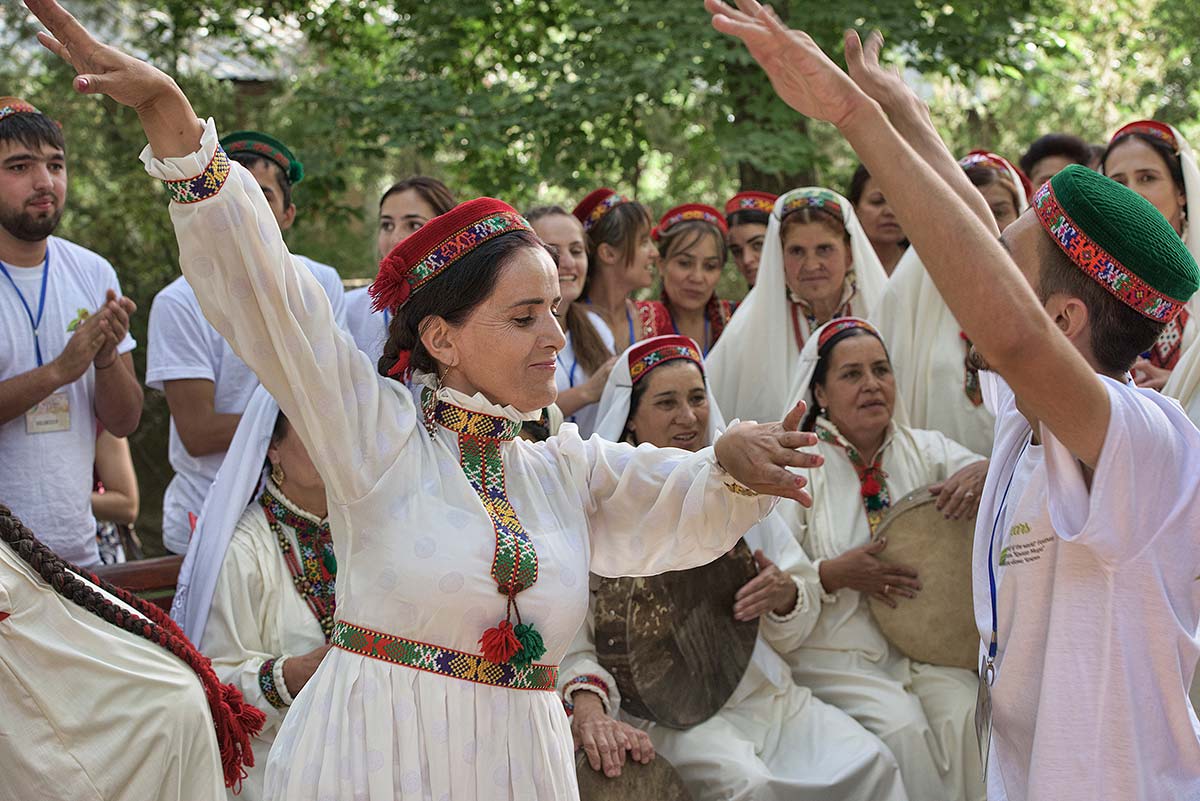
These days, the town boasts the region’s only university, as well as the highest botanical garden in the world. It has the only real supermarkets between Dushanbe, the Tajik capital, and Osh, across the Kyrgyzstan border, some 500 miles away. Afghanistan is just down the road, crossed on a new bridge across the Pyanj River, with a colorful local market full of Afghan traders held on the Tajik side of the border several times each week.
We stopped in the center of town at a newly built tourist office to enquire about finding a lunch spot serving something other than rice plov and the laghman noodles (both Central Asia staples) that we’d been eating for days on end and were told there was a new burger joint just down the road. The friendly staff told us we should hasten back though, as the festival would start soon.
It turns out we’d arrived for the opening day of the aptly named Roof of the World Festival, an annual event that has been held for fifteen years for several days each summer, bringing together different mountain tribes and communities from across the region, highlighting their music, dress, and longstanding traditions.
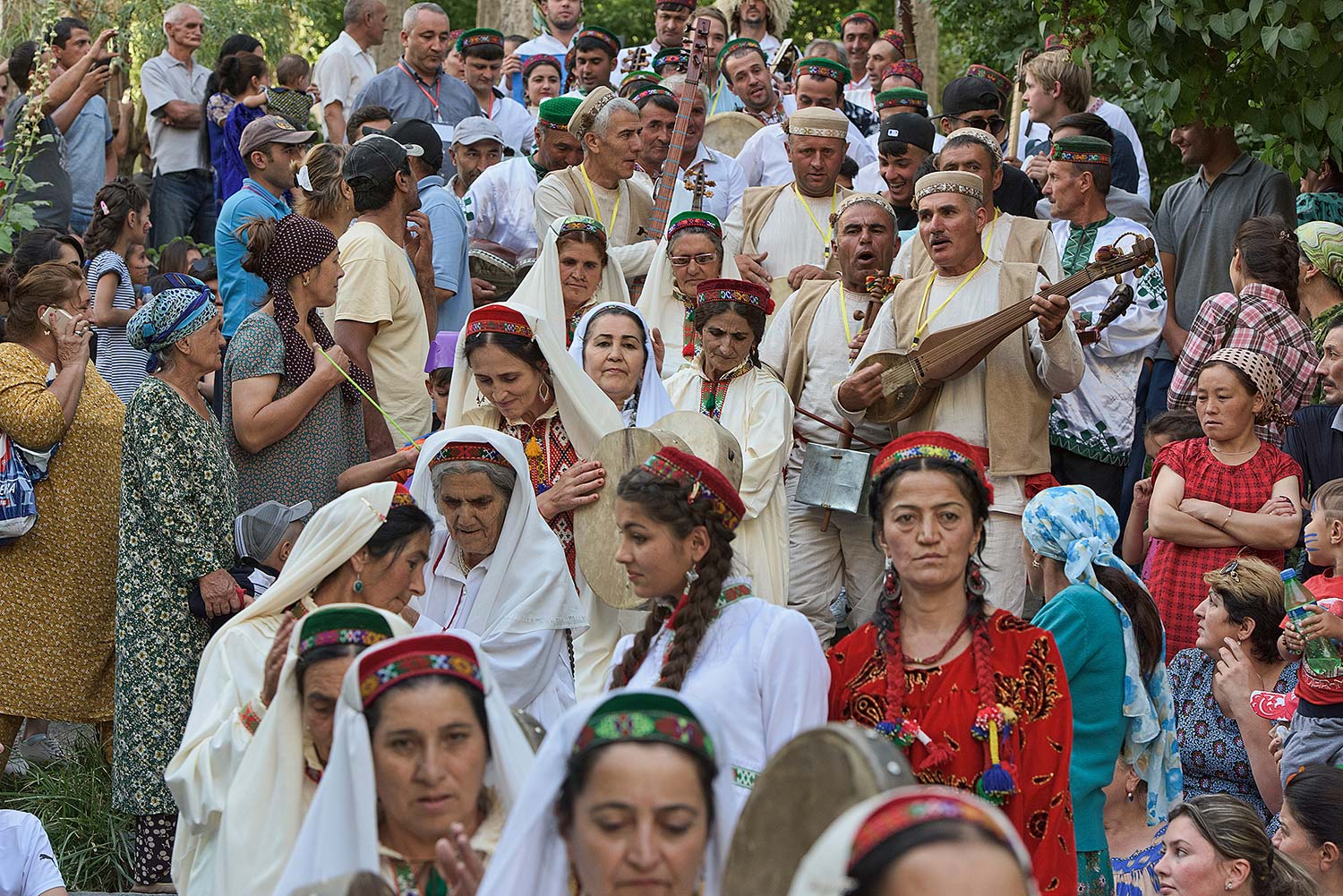
From the middle of nowhere to music festivals and burgers, this was starting to sound like a trip back home, and we quickly set out down the M41, the Pamir Highway and the main road running through town, feeling ravenous.
Travel is always full of rather incongruous surprises, and Khorog had indeed become home to fast food joints. We saw a large red and white sign for KFC, but stopping to inspect further, found this stood for Khorog Fried Chicken, which was indeed finger-licking good.
Further down the road, we saw some familiar golden arches on the side of a building, but as we neared, we were amused to find not McDonalds, but MacDolands, set on the third floor of a rather ugly tenement. I hoped the burger copies would be as palatable quality renditions as those of the signs outside, and indeed, the burgers turned out to be terrific. It was a long way to copyright infringement up in the high Pamirs.
Back at the central park, hundreds of visitors were arriving, most of them dressed in their finest traditional clothing. Kyrgyz men were wearing kalpak triangular felt hats and chapan embroidered robes, Uzbek women in bright satin tunics, and local Ismaili women in white dresses and red toki skull caps. Not only were the outfits exquisitely gorgeous, but the skill of the artwork was extraordinary, with elaborate flower patterns embroidered with cross stitching, and bright satin and colored silk sewing-worthy works of art.
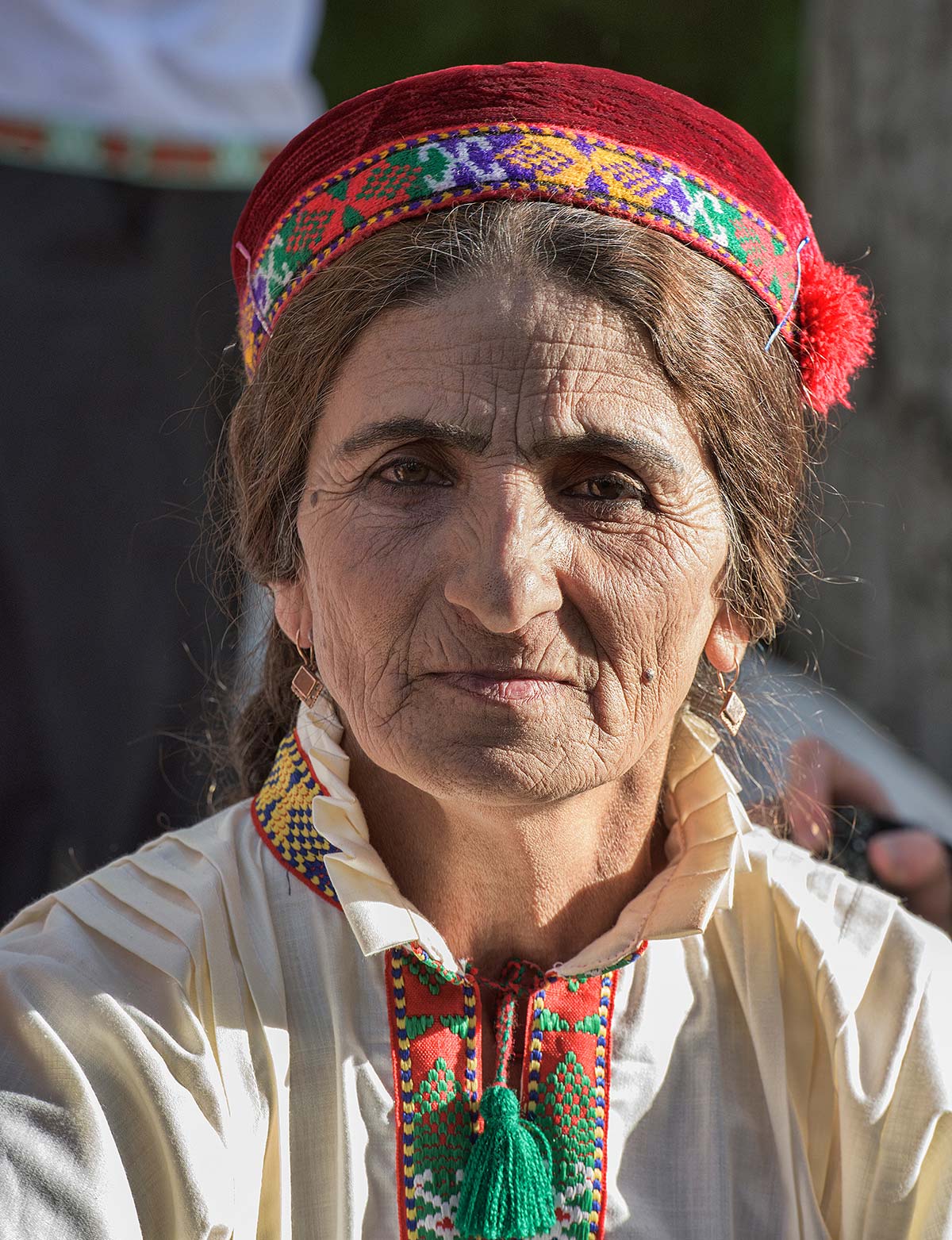
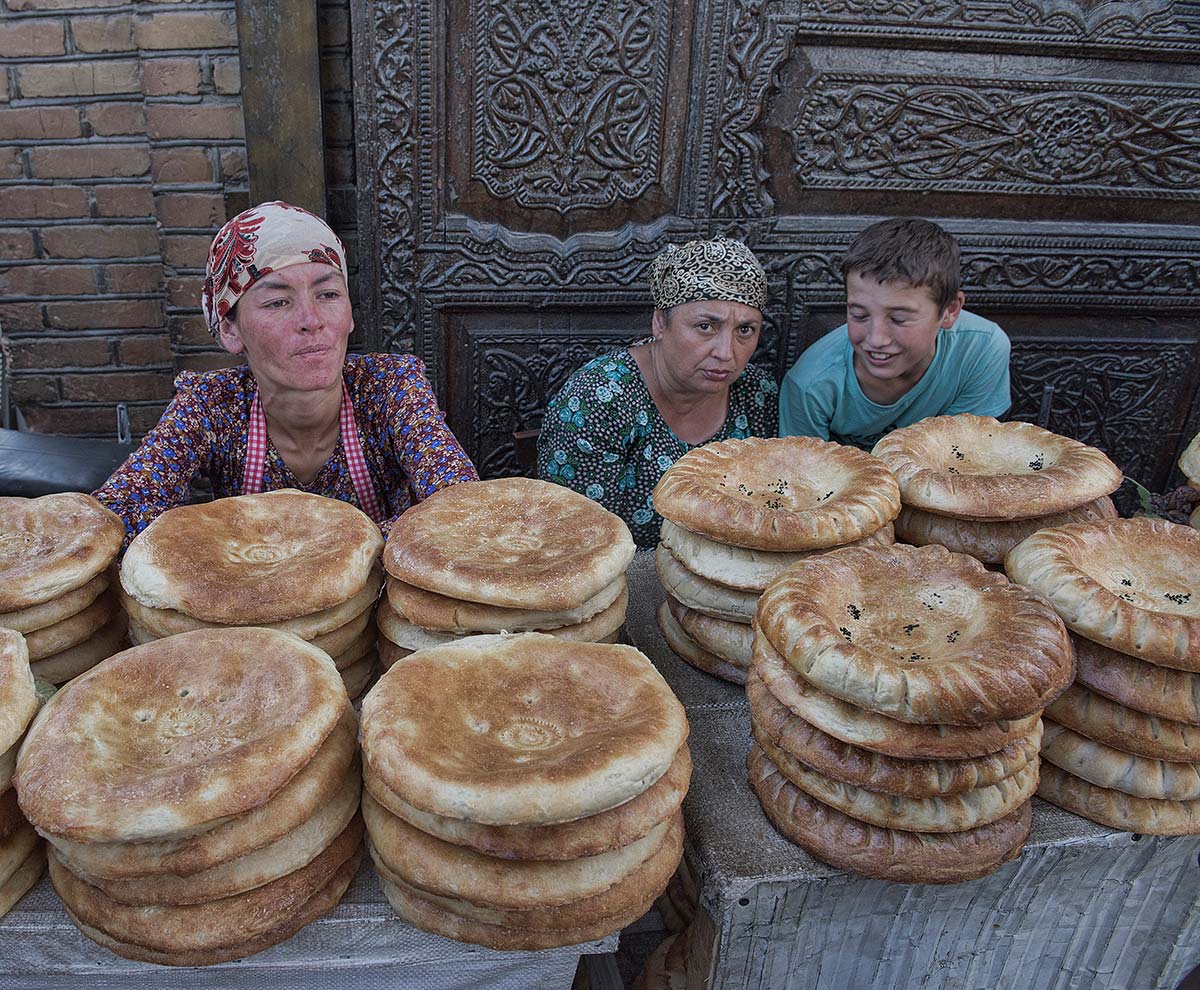
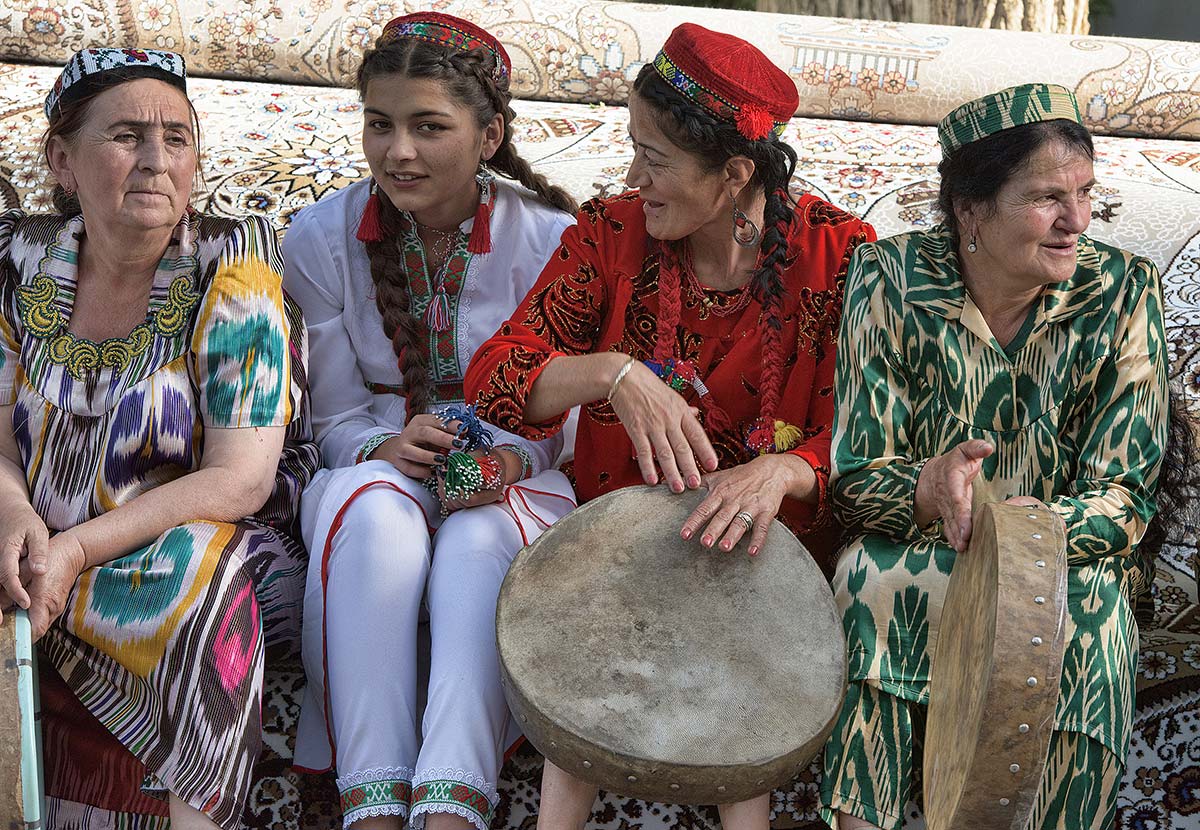
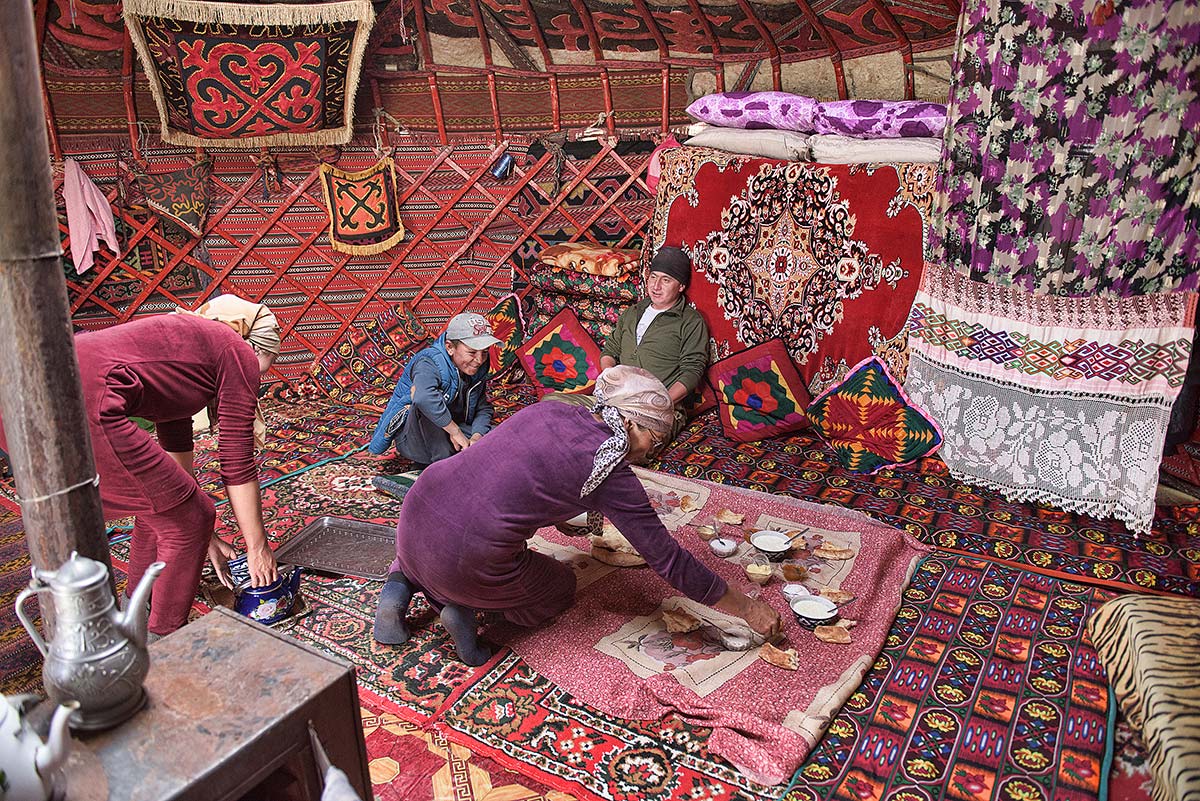
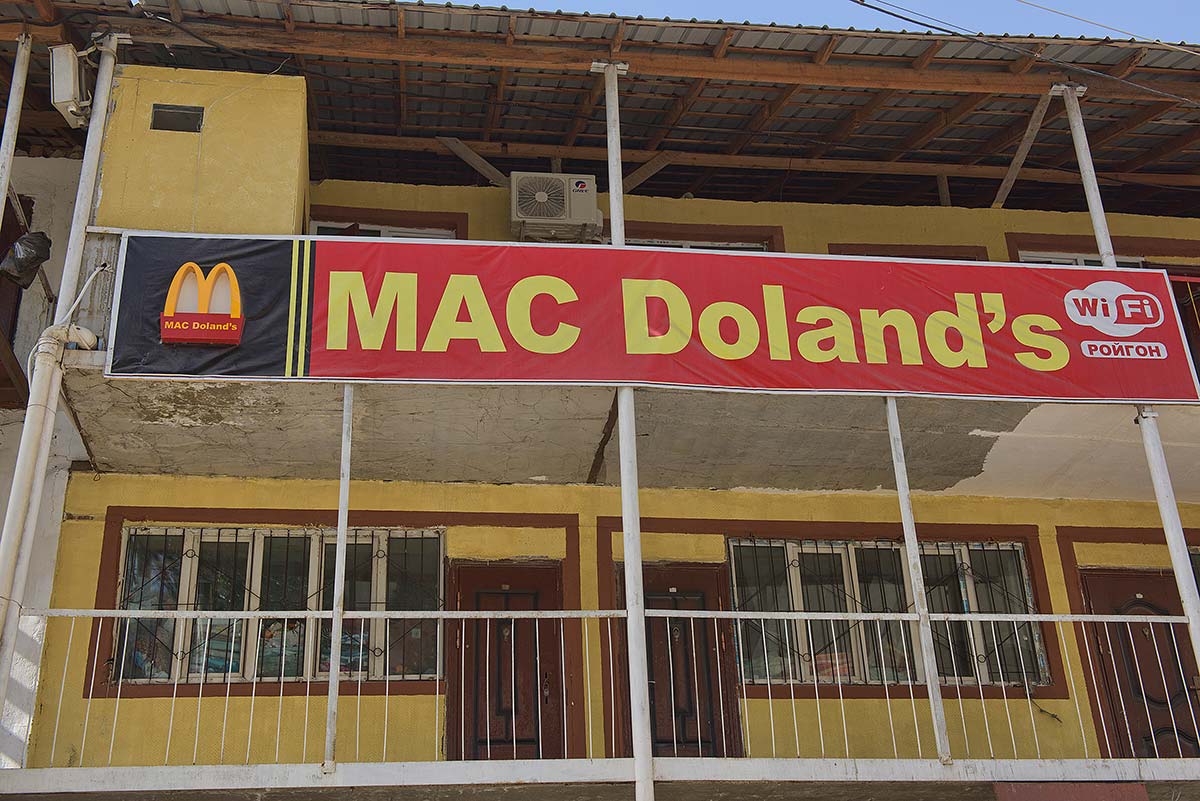
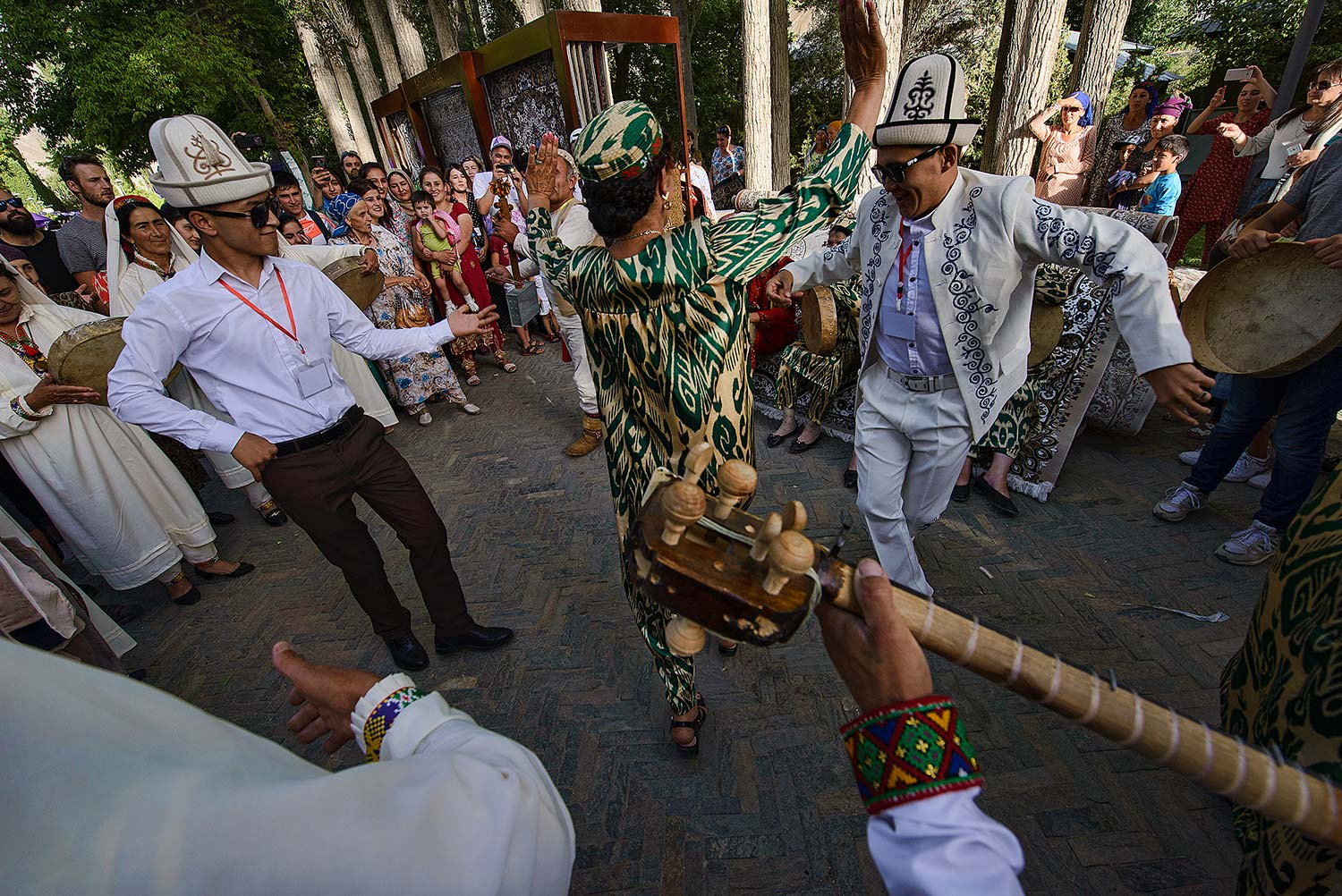
Several men were tuning up some stringed instruments that resembled lutes. I asked a young Kyrgyz man next to me what they were, and he said they were called rubob, made from either apricot, walnut, or mulberry wood, all local trees of the region. I also asked about the round tambourines that groups of women were starting to bring out, and he said these were known as daf, one of the primary instruments found throughout Central Asia, from Pakistan and Iran across the “Stans.” Made of goatskin, they produce a hypnotic vibrating beat. Instruments like these were often used in religious events and occasions and thus were banned during Soviet times, but today have returned across the mountains.
Within the hour, the forested park became packed with musicians and attendees, many of them starting to blend as one, as everyone was dancing and moving with the throng. Every age group was represented, from young children to elderly grandparents, many of them drumming, strumming, and twirling along. Some enterprising Kyrgyz had set up a traditional yurt from which to buy tea and kumis, the country’s national drink made from fermented mare’s milk, while nearby groups of Uzbek women hawked both hand-knotted carpets and freshly baked nan bread.
As the shadows lengthened, the crowd grew, and it appeared more youthful, with larger more formal bands taking to the main stage. At one point there was a surge in the crowd and a scrum to reach the stage, as an elderly gentleman with a white beard took to the stage. I asked the woman next to me what the fuss was about, and she excitedly whispered, “That is Daler Nazarov, his band is like the Beatles of the Pamirs!” Indeed, Nazarov, a composer, actor, and renowned singer, is one of the most famous Pamiris.
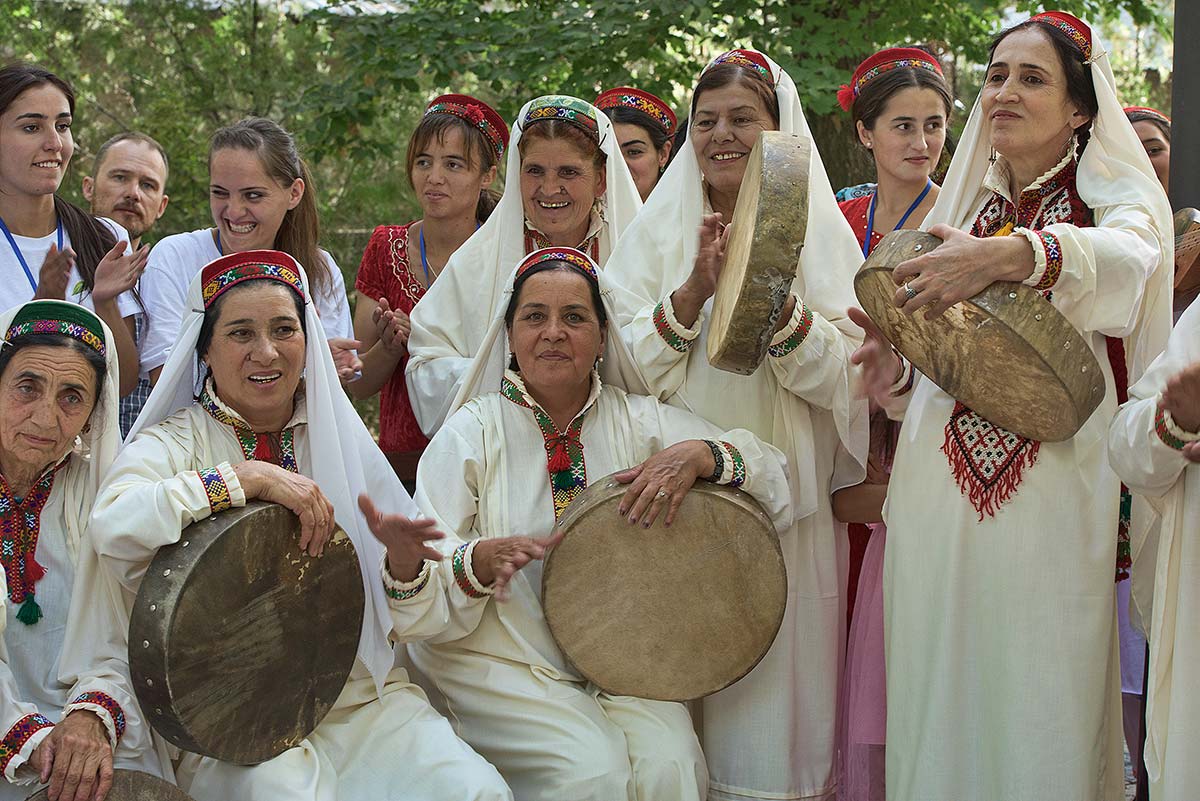
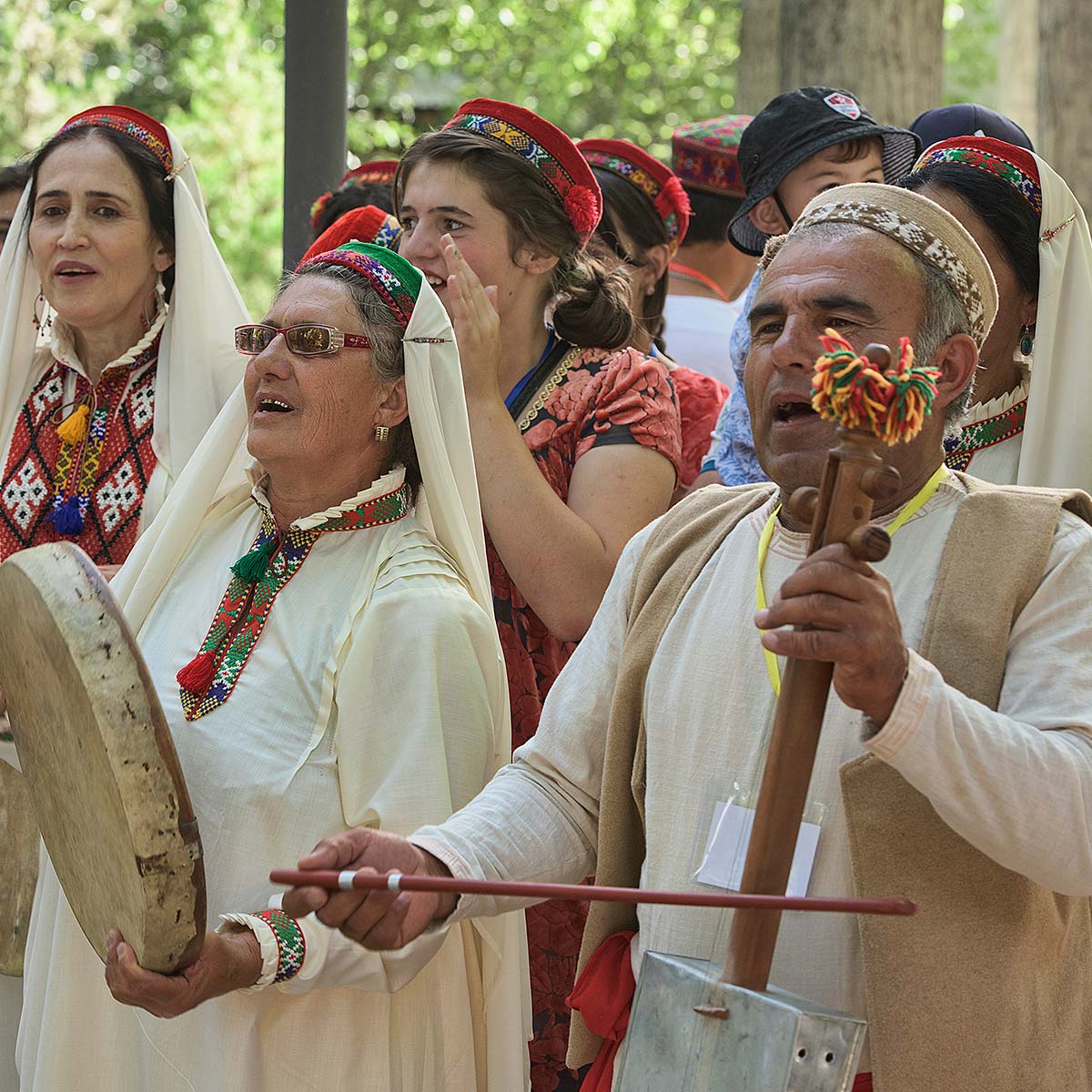
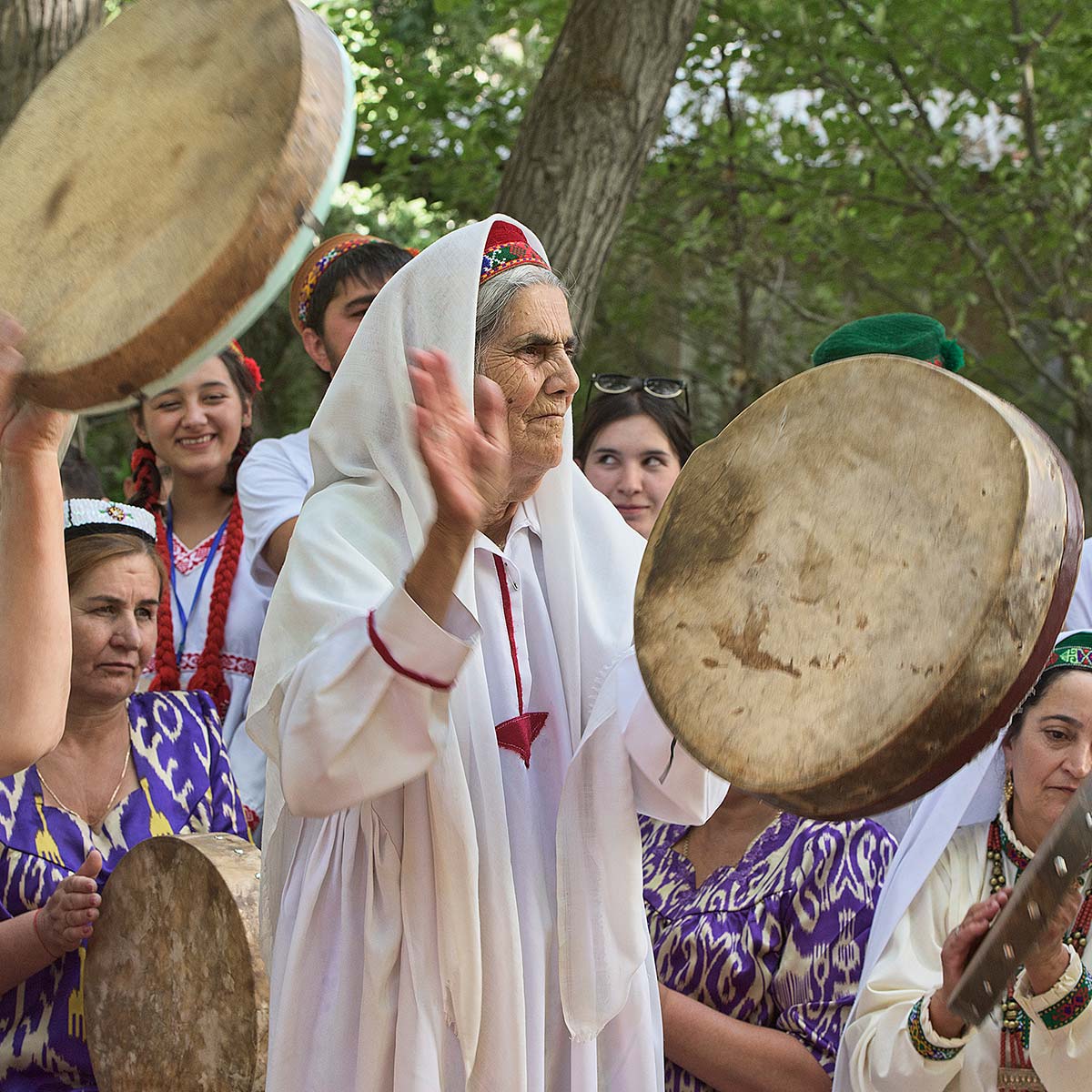
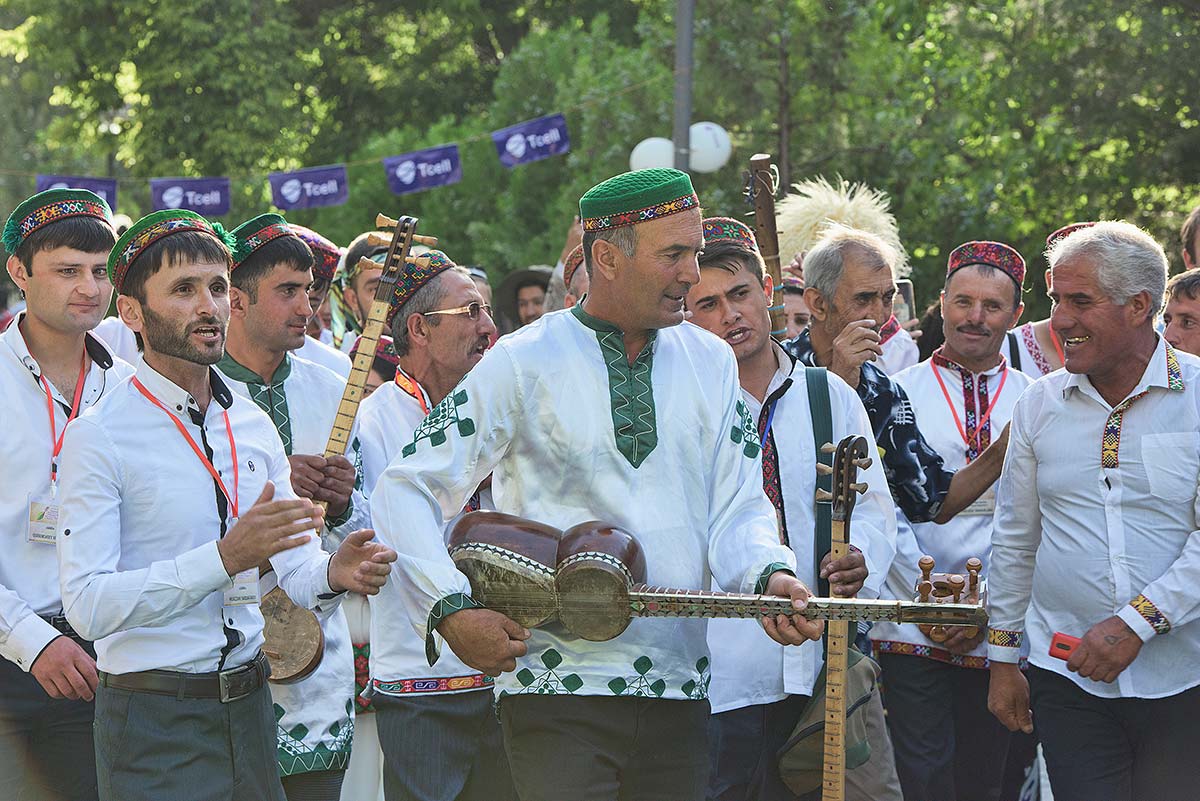
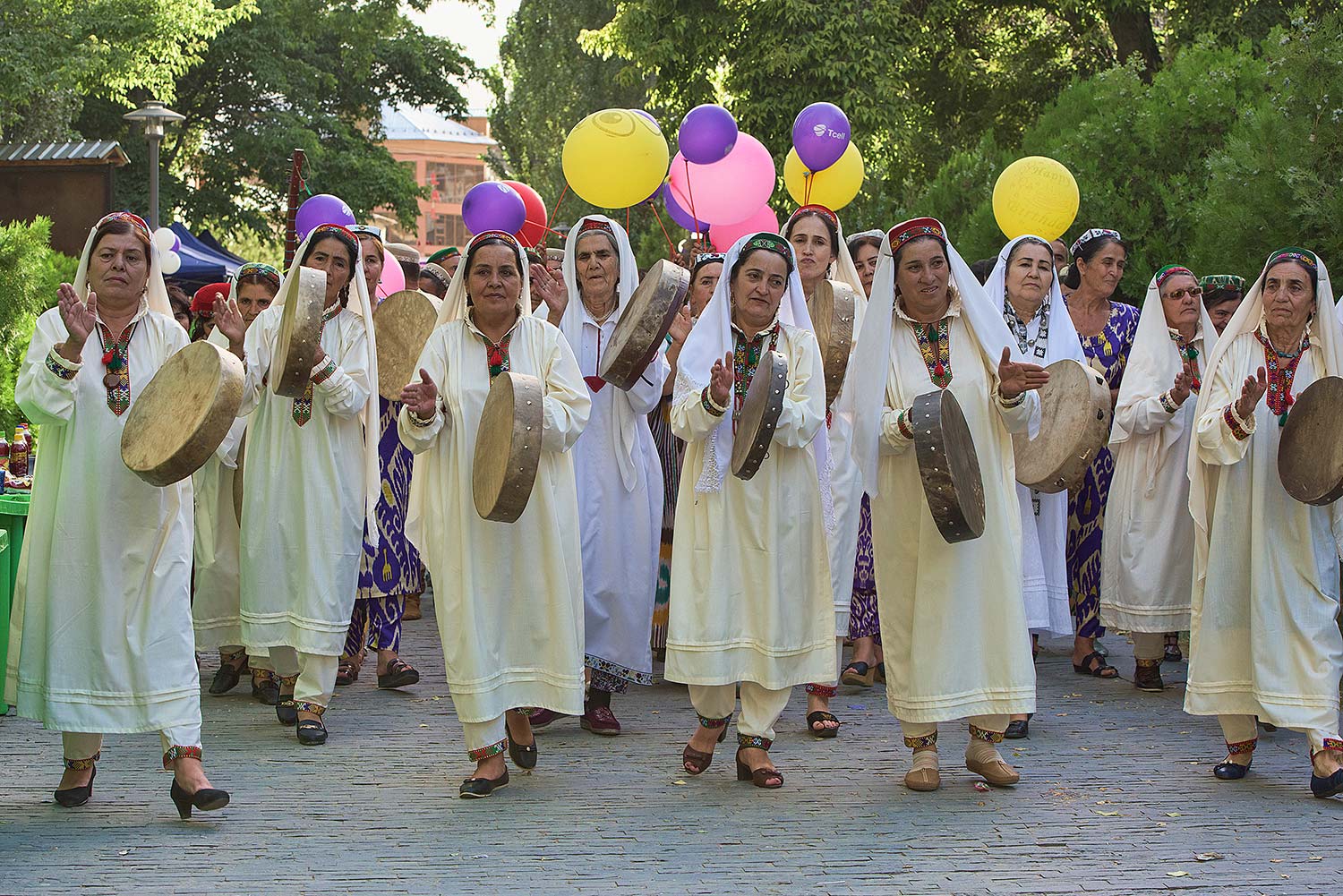
Following Nazarov, a stout Kazakh who resembled Genghis Khan got onstage and started throat singing to tremendous applause. It turned out that he too was internationally acclaimed, having recorded albums in Abbey Road studio in addition to playing concerts in the Kennedy Center and Carnegie Hall.
While this was turning out to be a major musical event, one worth planning and travelling for, I was still more taken by the whole spontaneous side of it, full of local and regional faces of all ages, all just enjoying themselves and the grand party that Khorog was putting on.
I made one last lap of the entire park, stopping several times to photograph people with striking faces, and asking if I could take their portrait. Everyone obliged, staring into the lens proudly and with a deep smile. While the huge mountains, savage rivers, and incredible high-altitude passes we had crossed had been an extraordinary experience, the Pamiris were the star attraction.
The Pamiris call their land Bam-i-Dunya, the roof of the world, a phrase that most likely originated from the tribal Wakhan language. And here in sleepy Khorog, we were all dancing on the roof, all united by song, dance, and plenty of good cheer.
